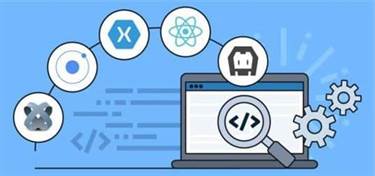The Best Sprint Planning Meeting Agenda Templates
Retrospective insights from the Sprint Retrospective of the previous Sprint can be valuable in this step. Proper planning is essential for a successful Sprint Planning Meeting. The Product Owners should have a prioritized Product Backlog, with each User Story or Backlog Item having defined Acceptance Criteria. The Development Team should be aware of their average velocity and team availability. The Scrum Master, or the person facilitating the meeting, should prepare a Sprint Planning Meeting Agenda Template to guide the discussion and ensure all key details are covered. The Sprint Planning Ceremony also involves detailed planning of tasks for the Sprint.

As you go through a few iterations of them you may need to increase or decrease the frequency. To make sure you get through your full agenda, you’ll want to keep a close eye on the clock. An easy way to do this is to set a timer for any presentations or talking points so you have a goal to complete each topic within a certain timeframe. Also, assigning a timekeeper at the start of the meeting will give you a dedicated person to check in on this throughout the call and ensure you still end on time. Others double check that they can commit to those items by breaking them down into tasks and estimating those tasks in hours to see if the amount of work is in line with past sprints. MindManager® helps individuals, teams, and enterprises bring greater clarity and structure to plans, projects, and processes.
Jira Software
Scrum is all about planning, so make sure your backlog is organized. That will let team members know what to work on next if it happens they deliver on the sprint goals early. The primary purpose of sprint planning is to decide what needs to be done and who will be doing it. BUT the meeting offers benefits beyond just dividing work among team members. The scrum master will be successful when the development team has understood the limitations for the coming sprint.
It also includes understanding the normal circumstances with the normal team velocity. Risk and variations to normal team velocity include things like changes to the development team changes, technology, or company. The scrum master keeps these things in mind and brings them forth.
How to run a sprint planning meeting
A sprint planning meeting is a session in which the product manager and development team plan the work the team will commit to for the upcoming 2–3 weeks. Scroll to the end to see a https://www.globalcloudteam.com/ template you can use as a cheat sheet when conducting your own sprint planning ceremony. The sprint planning process is a collaborative effort and it needs to be attended by the product owner, the development team, and the Scrum Master. Once the sprint goal is established, the team will talk through the product backlog together to decide what items should be included in the sprint.
It’s also critical information for planning your next sprint because you’ll have a better understanding of your team’s bandwidth and how much new work you can assign. Many teams and organizations leverage agile project management to improve project outcomes and processes. If you’re building a new product that may take several sprints to be MVP-ready, it’s tough to define useful sprint goals.
All You Need to Know About Sprint Planning Meetings
Any notes you and your team make during the meeting are time-stamped too, so you’ll always be able to go back and get the full context from the recording. If you don’t have Goals/OKRs, use our free library of over 360 goal and OKR examples to be inspired — Including OKRs for 18 specific engineering roles and 4 product roles. Worst case scenario, you miss your sprint commitments and lose trust among your team. Best case scenario, you hit all your deadlines and your team still doesn’t trust you. You should plan for these scenarios to avoid overcommitting to complicated work. The best way to do this is to account for these unknowns ahead of time when estimating stories during your grooming ceremony.
- Remember, when it comes to sprint planning in agile, the purpose is not to identify tasks.
- If a sprint takes a week to be executed, the sprint planning meeting should not take more than two hours.
- Those tasks and goals are defined and agreed upon during the sprint planning session.
- These meetings are usually run by the product owner and/or scrum master.
- The product backlog can address just about anything, to include new functionality, bugs, and risks.
- This agenda template not only lets you lay out the steps needed to reach your goal, but it also enables your team to start taking action towards it right away.
You need to revisit to refresh memories and update new members. DOD can serve as a checklist to come up with the tasks for the user story. The most important thing the team needs to consider when selecting user stories is that their goal is not to go faster but to deliver value. The team decides on user stories according to priority and their capacity and velocity. Reminding the team that they’re all working hard towards the same goal is crucial. A product backlog is a to-do list with user stories, including adding new features, improving existing features and other maintenance activities of a product.
Vowel AI: Let AI do the Meeting Grunt Work
So, when the team checks stories, they need to break them up so that a story fits in one sprint to complete. Sprint planning meetings are called time-boxed meetings, meaning that you should set a time limit for each meeting. If a sprint takes a week to be executed, the sprint planning meeting should not take more than two hours. And to plan for a two-week sprint, the meeting should not last more than four hours, and so on. Anyone can create a Sprint Planning meeting agenda template using Word, Google Docs, or some other program. But an elegant one will help you get your team on the same page when it comes to the purpose of a sprint.

This is notoriously difficult, which is why increasingly teams are turning to tools like LinearB to plan more accurately. For agile development, we estimate complexity, not time required to complete. As a consequence, we assign complexity points to each story we evaluate. Here are the main building blocks for your sprint planning meeting agenda.
Experiment: Ask Powerful Questions To Get Things Done
Use the agenda to help everyone move through the various topics of discussion without getting bogged down trying to identify and estimate every possible task. LogRocket identifies friction points in the user experience so you can make informed decisions about product and design changes that must happen to hit your goals. With LogRocket, you can understand the scope of the issues affecting your product and prioritize the changes that need to be made. LogRocket simplifies workflows by allowing Engineering and Design teams to work from the same data as you, eliminating any confusion about what needs to be done. Running an effective sprint planning begins with intentional and upfront preparation. To help your team manage upcoming sprints better, make sure they learn about new time management skills and productivity tips to help them achieve more with the scarce time they have.

Instead, aggregate the story points over completed sprints and opt for cross-training to increase your team’s velocity. Ensure that team members are fully aware of the current velocity needed for the sprint planning meeting agenda sprint backlog. This way, team members don’t have a chance to select stories and attack in the sprint. It’s always best to keep it in the back of your mind rather than relying on a gut feeling.
Meeting Templates
If done right, the product owner will have a complete understanding of the details of each feature, so that she/he can answer any questions. The preparation of the sprint planning meeting falls mostly on the shoulder of the product owner. These meetings are usually run by the product owner and/or scrum master. Adapt this sprint planning meeting agenda template for your own needs, and continue to refine it as you execute future sprints.
